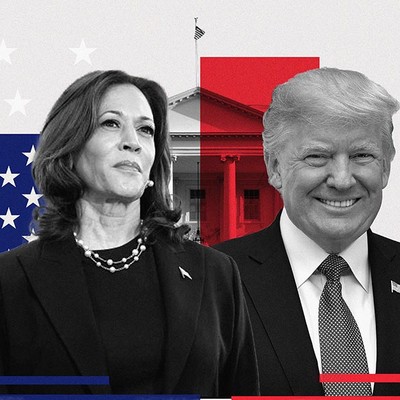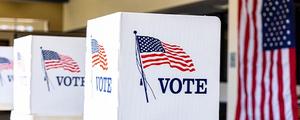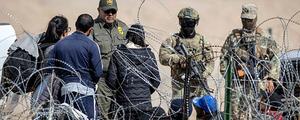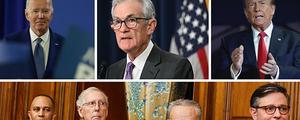WASHINGTON, D.C. -- Americans have become significantly more likely to identify as liberal in their views on social issues over the past quarter century. In most annual measures since 2015, they have been about equally likely to express having liberal views as moderate and conservative ones -- reflecting a shift from Gallup’s earliest measures, when liberal perspectives on social issues were a firmly minority viewpoint.
Meanwhile, Americans still lean conservative on economic issues, but the percentage leaning liberal has been trending up slightly.
Both trends toward more liberal views than in the past are driven by U.S. Democrats; neither Republicans nor independents have become more liberal in their views over time. These trends on social and economic views are separate from the slight long-term increase in Americans’ description of their political views, broadly, as liberal.
Social Issues Viewed Equally Through Liberal, Moderate and Conservative Lens
Gallup’s May 1-23 Values and Beliefs survey finds that Americans are currently about equally likely to say their views are conservative (32%), moderate (32%) or liberal (33%) on social issues. Though annual figures have fluctuated, the ideological parity in the latest measure is also reflected in a five-year average of figures from 2020 to 2024.
In Gallup’s earliest readings on these questions, Americans were more likely to identify as socially conservative than liberal. From 1999 to 2008, a third or more of Americans each identified as conservative or moderate on social issues, while about a quarter or less identified as liberal.
Despite some fluctuation over time, liberal identification on social issues has gradually increased, while conservative and moderate identification has each gradually decreased slightly.
Conservative and Moderate Perspectives Remain Predominant on Economic Issues
Americans are currently most likely to describe their views on economic issues as conservative (39%) or moderate (35%), while about a quarter describe their economic views as liberal (23%).
Like Gallup's trend on social issues, Americans have become more likely to describe their views as liberal, though this increase has not led to ideological parity as it has on social issues. The peak in liberal economic identification was recorded in 2021, at 25%; it has exceeded 20% for each of the past five years.
As liberal ideology on economic issues has become a bit more common in the U.S., moderate and conservative views are each down slightly compared with Gallup's earliest measures in the late 1990s and early 2000s.
Conservative views on economic issues were particularly common during Barack Obama’s first term as president, as the nation was emerging from the Great Recession and as he increased federal spending on economic stimulus and healthcare. From 2009 to 2012, roughly half of Americans expressed a conservative ideology on economic issues -- including a majority of 51% recorded in 2010, during the Tea Party wave that swept through congressional elections that year.
Though pluralities have expressed conservative views on economic issues throughout Gallup’s trend, about half of the measures from 1999 to 2024 find conservative and moderate perspectives statistically tied.
The 16-percentage-point distance between the conservative and liberal views on economic issues this year matches the smallest gap in the trend, recorded in 2021.
Democrats Drive the Trend in Greater Liberal Views
The overall increase in liberal views on both social and economic issues is driven exclusively by Democrats.
When comparing this year’s figures with measures taken 10 and 20 years ago, Democrats’ liberal identification on social issues has increased by 30 points from 2004 to now. On economic issues, Democrats’ liberal identification has nearly doubled.
Meanwhile, Republicans and independents are no more, and no less, likely to identify as liberal on social or economic issues than they were in 2004 or 2014.
Independents’ ideological perspectives are nearly exactly what they were in 2004 and 2014. They remain most likely to say their views on both kinds of issues are moderate.
Republicans have become more conservative on social and especially economic issues. They are somewhat less moderate than in the past on social issues and are half as likely now as in 2004 to express moderate views on the economy. As was the case in 2004, few Republicans identify as liberal on either kind of issue.
These trends toward greater Democratic identification on social and economic issues mirror those seen in Americans’ ideological identification, generally.
Bottom Line
Compared with 2004 and 2014, Republicans have become more conservative and Democrats have become more liberal in their views on both social and economic issues, but not at the same rate. The growth in liberal views among Democrats has outpaced that in conservative views among Republicans, which were already the dominant position among the latter group. As the ideological makeup of political independents has remained steady, the liberalization of Democratic views has altered the national averages on both social and economic issues.
Americans’ views on economic matters, broadly, still lean more conservative than liberal, despite a growing number of Americans who identify as economically liberal. However, in the wake of landmark changes on LGBTQ+ rights, legalization of marijuana in much of the country, and the Supreme Court’s recent overturning of Roe v. Wade, the nation is now less conservative than in the past on social issues, with equal shares identifying as liberal, moderate and conservative.
To stay up to date with the latest Gallup News insights and updates, follow us on X @Gallup.
Learn more about how the Gallup Poll Social Series works.
View complete question responses and trends (PDF download).





